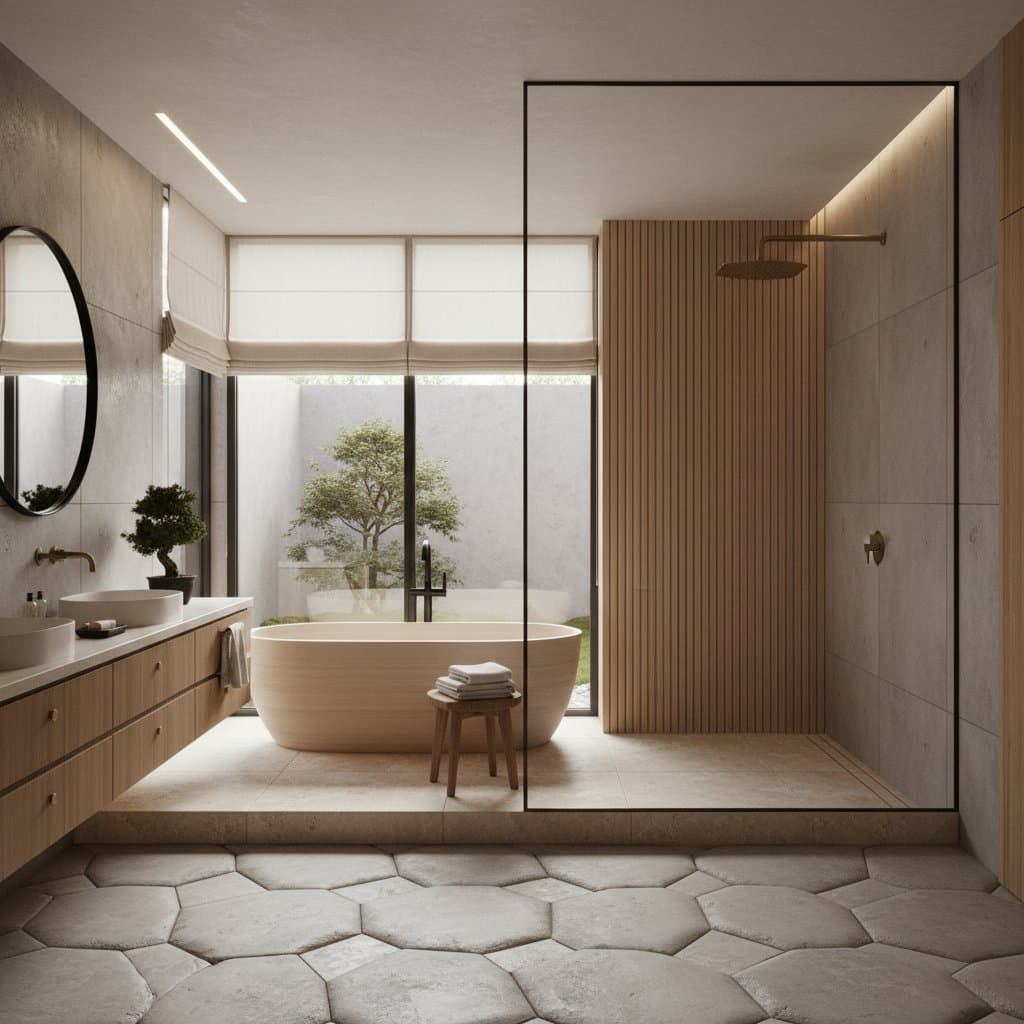Why Wet Rooms Are Redefining Modern Bathroom Design
Wet rooms are transforming bathrooms into sleek, spa-like retreats, outpacing traditional showers in both style and function. Found in boutique hotels and renovated homes, these open, seamless spaces blend luxury with practicality. Homeowners now prioritize accessibility, spaciousness, and low-maintenance design, while advancements in waterproofing and drainage eliminate past technical concerns. As a design choice, wet rooms deliver a bold statement and solve real-world challenges.
What Sets Wet Rooms Apart From Traditional Showers
Unlike conventional showers confined by trays and doors, a wet room treats the entire bathroom as a single waterproof zone. This fundamental difference reshapes both aesthetics and usability. The open-plan layout feels expansive with no enclosures or curtains, while a level, fully waterproofed floor ensures safety and simplicity. Accessibility shines with barrier-free entry, ideal for wheelchair users or aging individuals, and the uninterrupted flow of tiles and fixtures creates a cohesive, modern look with fewer seams for mold to hide.
Key Trends Driving the Wet Room Surge
Minimalist design fuels wet room popularity, with large-format porcelain or natural stone tiles reducing grout lines for a seamless appearance. These tiles visually enlarge small spaces and maintain their appeal over time. Linear drains, sitting flush with the floor, offer discreet water flow, supported by reliable systems from brands like Geberit and Schluter that streamline installation. Features such as integrated LED lighting, humidity sensors, water-saving fixtures, and recycled materials also cater to eco-conscious buyers and enhance safety and ambiance.
Essential Design and Installation Tips
Waterproofing forms the backbone of any wet room. Opt for trusted systems like Schluter Kerdi or Wedi panels, extending membranes up walls at least 180 centimeters in shower zones and ensuring overlaps at drains. A subtle floor slope of 1 to 2 percent directs water to the outlet, while slip-resistant tiles rated R10 or higher prioritize safety. Large-format tiles paired with epoxy grout minimize water penetration and staining, enhancing durability.
Fixtures play a critical role in functionality and style. Thermostatic mixers prevent scalding, rain heads paired with handheld options offer versatility, and grab bars in matching finishes blend seamlessly. Ventilation cannot be overlooked; install a humidity-sensing extractor rated for the room size, such as 150 cubic meters per hour for a 10-square-meter space, to protect finishes. These elements ensure a wet room is both practical and polished.
Step-by-Step Checklist for Wet Room Installation
- Evaluate the space and layout, identifying the natural low point for drain placement to avoid costly pipe adjustments.
- Choose a waterproofing system, comparing sheet membranes to liquid-applied options, and prioritize products with strong warranties.
- Order tiles well in advance, as large-format or natural stone options may require 8 to 12 weeks for delivery.
- Engage a certified installer with specific wet room experience, beyond general tiling skills.
- Plan for maintenance access, incorporating removable panels near drains for easy cleaning.
- Conduct a 24-hour flood test before finalizing walls to verify watertight seals at all junctions.
Wet Rooms Versus Walk-In Showers: A Comparison
While walk-in showers have their merits, wet rooms offer distinct advantages. Walk-in showers often rely on glass enclosures and low thresholds, whereas wet rooms eliminate barriers entirely for a true open design. Installation complexity is higher for wet rooms due to precise waterproofing and slope requirements, compared to the simpler plumbing of prefabricated shower trays. However, wet rooms excel in maintenance with fewer seams for mold growth and provide unmatched design freedom, boosting resale value with their dramatic, cohesive aesthetic.
Accessibility and Sustainability Benefits
Wet rooms inherently support barrier-free living by removing steps and offering wide entries, with a 90-centimeter clear width accommodating many wheelchairs. Recessed or wall-mounted grab bars maintain safety without sacrificing style, aligning with building codes in many regions that promote accessible features. On the sustainability front, low-flow showerheads at six liters per minute reduce water use, open layouts improve heat distribution, and recycled glass tiles or low-VOC sealants minimize environmental impact while ensuring healthy indoor air quality.
Budget and Cost Insights
Wet rooms typically demand a higher initial investment than basic shower enclosures, with costs varying based on finishes and complexity. For a 10-square-meter space, expect to budget between 5,000 and 9,000 US dollars, factoring in waterproofing membranes, linear drains, tiles, and skilled labor. Porcelain tiles mimicking natural stone can save 30 to 40 percent compared to marble, offering a cost-effective yet elegant alternative. Long-term benefits like reduced maintenance and enhanced accessibility often offset upfront expenses, adding value to daily use and resale potential.
Launching Your Wet Room Project
Ready to elevate your bathroom? Start by sketching a layout that accounts for drain placement and built-in features, then confirm plumbing and hot water capacity for future flexibility. Invest in a reliable waterproofing system and prioritize safety with slip-resistant tiles and thermostatic controls, especially if accessibility is a focus. By focusing on core elements like drainage and ventilation first, you can phase in premium finishes later, ensuring a high-impact result that blends style with lasting practicality.










